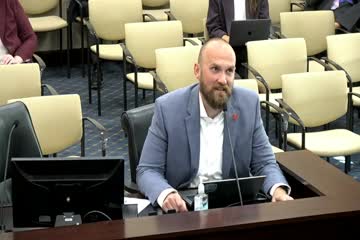Housing Crisis Deepens as Affordability Plummets in Utah
October 16, 2024 | Utah Interim, Utah Legislative Branch, Utah
This article was created by AI summarizing key points discussed. AI makes mistakes, so for full details and context, please refer to the video of the full meeting. Please report any errors so we can fix them. Report an error »

In a recent government meeting, officials discussed the escalating housing crisis in Utah, highlighting significant challenges in affordability and supply. The median sales price for single-family homes has surged to approximately $510,000, marking a notable increase from previous years. This rise in prices, coupled with soaring construction costs and a growing population, has led to a dramatic appreciation in housing values since 2017.
The meeting revealed that the income required to afford a median-priced home in Utah is around $151,000, a figure that underscores the widening gap between wages and housing costs. Currently, only about 8% of residents can afford to purchase a home at the median price, and even at a lower threshold of $400,000, this figure only rises to 25-30%. The disparity is particularly stark for renters, with 9 out of 10 priced out of the market.
Officials noted a significant shift in the rental landscape, where the cost of renting a single-family home is now about $2,200, compared to a mortgage payment of approximately $3,100. This discrepancy has led to an increase in demand for rental properties, prompting a potential rise in the development of single-family homes specifically for rent.
The meeting also addressed the urgent need for new housing units, estimating a requirement of 153,000 new homes by 2030 to keep pace with population growth. This figure reflects a substantial improvement from previous years, where the housing shortage was estimated at 56,000 units. The growth is not limited to urban areas but is spreading across various counties in the state.
In response to the crisis, the governor's office is prioritizing the development of 35,000 starter homes over the next five years and is working on a statewide housing strategic plan. This plan aims to balance supply and demand while ensuring that housing remains accessible to residents.
Concerns were raised about corporate investors outbidding individual buyers, with officials discussing potential policies to restrict corporate ownership of residential properties. The meeting concluded with a call for innovative solutions to address the complex interplay of housing supply, affordability, and the need for sustainable community development.
The meeting revealed that the income required to afford a median-priced home in Utah is around $151,000, a figure that underscores the widening gap between wages and housing costs. Currently, only about 8% of residents can afford to purchase a home at the median price, and even at a lower threshold of $400,000, this figure only rises to 25-30%. The disparity is particularly stark for renters, with 9 out of 10 priced out of the market.
Officials noted a significant shift in the rental landscape, where the cost of renting a single-family home is now about $2,200, compared to a mortgage payment of approximately $3,100. This discrepancy has led to an increase in demand for rental properties, prompting a potential rise in the development of single-family homes specifically for rent.
The meeting also addressed the urgent need for new housing units, estimating a requirement of 153,000 new homes by 2030 to keep pace with population growth. This figure reflects a substantial improvement from previous years, where the housing shortage was estimated at 56,000 units. The growth is not limited to urban areas but is spreading across various counties in the state.
In response to the crisis, the governor's office is prioritizing the development of 35,000 starter homes over the next five years and is working on a statewide housing strategic plan. This plan aims to balance supply and demand while ensuring that housing remains accessible to residents.
Concerns were raised about corporate investors outbidding individual buyers, with officials discussing potential policies to restrict corporate ownership of residential properties. The meeting concluded with a call for innovative solutions to address the complex interplay of housing supply, affordability, and the need for sustainable community development.
View full meeting
This article is based on a recent meeting—watch the full video and explore the complete transcript for deeper insights into the discussion.
View full meeting

